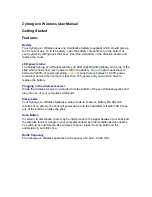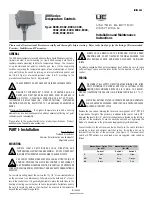
Page 10 of 13
BLOCKsignalling
www.blocksignalling.co.uk
Program Flow Diagram
As mentioned above, there are a number of
memory locations
which can
programmed with different
values
to change the operation of the module.
Before starting, it is a good idea to write down the memory locations and the values
you are going to set them to.
Programming is performed by holding down the Push Button when switching on the
power. The red led on the PCB flashes at 1 second intervals.
When the required number of flashes is seen for the
memory
you want to change,
the button is released to select the memory. At this point the led comes on for five
seconds to confirm.
The led then starts flashing again, and this time the button needs to be pressed to
store the
value
you want the memory to be set to.
After pressing the button, the led flashes 10 times rapidly, and the module starts
operating.
Repeat the process for the any other changes you want to make.
If you make a mistake selecting the memory location or setting the value, you may
want to perform a factory reset to return the module to its default settings.
The following diagram shows all the available settings.
Factory Reset
Resetting back to factory settings will allow the module to restart with known settings
and is useful if there may have been a mistake made in programming.
To reset the module back to factory settings, switch off the power to the module and
hold down the Push Button. Apply the power and continue holding the push button
until
1 flash
of the led is seen. At this point, release the button. You will see a long
flash of five seconds.
The led will begin flashing again. When you have seen
1 flash
, press the button.
You will see a long flash of five seconds and then 10 rapid flashes.
The reset procedure is then complete and the module will restart with factory
settings.
If you make a mistake programming, simply repeat the process.
Note: following factory reset, the module will operate using the default program for a
4-aspect signal.































